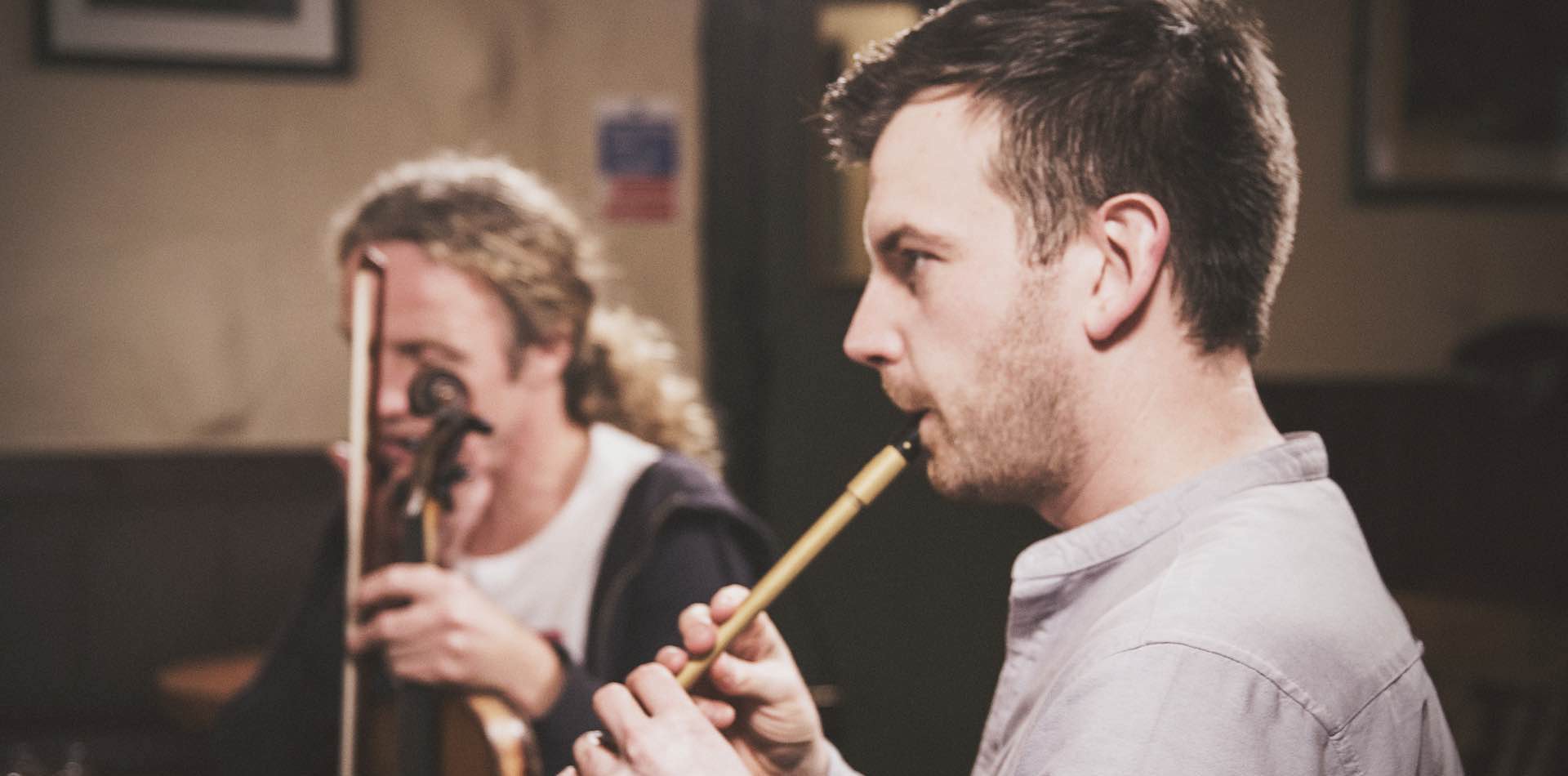Let’s look at scales now. A scale is a run of notes that, when used to create a melody line, creates a particular sound or vibe that is particular to that run of notes. Let’s take this run of notes: G – A – B – C – D – E – F#. That is seven notes. All of them are natural (i.e. not flat or sharp) except for the F# note. We can play these on our instrument as an ascending run (scale) from start to finish. We can play it descending, beginning from F# and working back or, indeed, we can play it in a million and one different variations by swapping notes around, leaving some notes out and repeating other notes several times. What are we doing when we play scales and melodies within this framework of notes? Simply, we are playing in the “key” of G major. No doubt, many of you will have begun your OAIM journey by firstly learning a C, G, or D major scale on your respective instrument. This is the best way to get familiar with the different note possibilities that your instrument affords.
Before you read on, I want you to do something. Go to your OAIM course and find, if available, a tune that is notated in the key of G major. Usually the key will be mentioned in the lesson description or, alternatively, you’ll find key information in the ABC files. When you have your ABC or sheet music file loaded up, scan through the notes of the tune and notice how they don’t vary outside the seven notes mentioned above. They are all within the range of notes ascending from G to F# with only one note that is not natural – F# itself. Do take note, however, that some tunes have “accidentals” which are exceptions to this rule but hopefully you haven’t picked such a tune! Good examples of popular G major tunes to demonstrate this are The Sally Gardens, Out on the Ocean, The Kesh Jig and Off to California.
So, different major keys (A, G, D etc) have differing rules regarding which notes are to be sharp, flat and/or natural. Once we learn these simple rules pertaining to each key, we can analyse a tune to determine its key by looking at the quality of the notes.
I want to look at C major now. It’s not a very common key in Irish traditional music but does crop up in some well-played tunes such as The Hole in the Hedge, The Steeplechase, The Graf Spey and Hanly’s Reel/The New Line to Loughaun.
C is a good starting point because every note in this scale is natural (no flats, no sharps). As such, the notes used within the key of C are as follows: C – D – E – F – G – A – B
You can, of course, use many different octaves of these notes. You can play them long, medium or short in timing and, indeed, you can embellish them to your hearts’ content. But once you don’t step out of this note limit, you are playing in the key of C major. That’s a fact (almost – we’ll get to modes in a minute!).









